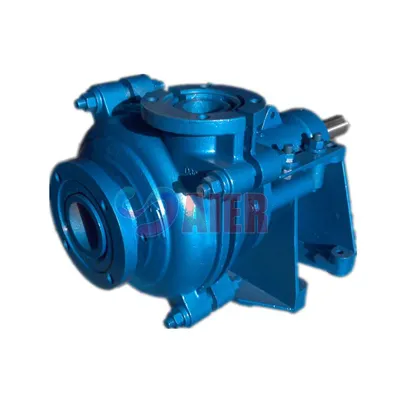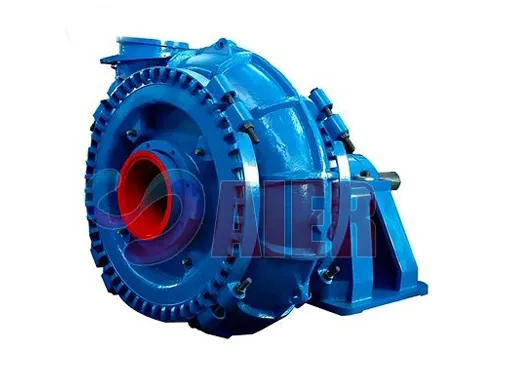Back to list
A Principle for Slurry Pump Manufacturers
First, before trying to handle a >slurry pump or use any type of slurry pump, everyone should know a little bit about what slurry is. The three main characteristics of slurry that you need to worry about include
- Viscosity
- Corrosiveness
- Solids content
At an observational level, viscosity describes the consistency of the slurry, which you can measure by the fluid's resistance to shear or flow. If the viscosity of the slurry is low, close to that of water (also known as a Newtonian fluid), it will flow through most systems as long as the particulate matter is suspended in the slurry mixture. Conversely, if the viscosity of the slurry is high, it can cause serious damage to pumps and other components if not handled properly. It may even clog pipes and lead to dead head situations that can completely destroy your pumping system! Make sure you are using the right equipment when pumping high viscosity media.
>
Slurry Pump
Corrosiveness is a loose term used to measure the potential for corrosiveness or damage to the pump or the system it is pumping through through a chemical reaction, slurry or other fluid. If it is low corrosive, you don't have to worry about whether the components in the slurry will damage your equipment.
However, if it is highly corrosive then you need to take additional measures to protect your pump from damage caused by these chemicals. There are two types of corrosion: local corrosion and total corrosion. Localized corrosion occurs when a material corrodes much faster than the other materials around it and causes holes to form and eventually collapse the entire material.
The system that contains them (in this case your pump) Full-scale corrosion occurs when all materials corrode at the same rate and cause corrosion to gradually accumulate. This can also lead to vulnerabilities, but because the buildup occurs over a long period of time (perhaps even days or months), it can be difficult to notice. Aier takes corrosion factors and corrosiveness into account when selecting materials for >slurry pump applications.

Slurry Pump
Finally, the solids content specifies how much non-fluid material you will be pumping, i.e., the liquid in the slurry versus the solids. There are some upper limits to the volume concentration of solids that a centrifugal slurry pump can handle, and actual values for the weight and volume concentration of any given slurry will help application engineers
Specify the best pumping solution for your system. The maximum and average particle size plays an important role in pump selection and also affects whether the slurry will settle in long pipelines.
Keeping it simple: principles for mud pump manufacturers
All manufacturers are consistently engaged in product development in both the long and short term. Customers should expect to benefit from these developments in a variety of ways: increased efficiency, increased reliability, reduced operating costs, or both. Unfortunately, these so-called product developments released by the slurry pump industry often fail to realize some or any of these benefits. Instead, many times the new products or components that other manufacturers advertise as "product development" are actually marketing efforts aimed primarily at reducing competition.
Examples of these questionable improvements in impeller adjustment abound in the industry. One of these is the adjustable wear ring or suction bushings to maintain the recommended clearance between the impeller front shroud and throat liner face. This includes the Aier slurry pumps, which already have features to ensure that this equipment specification can be maintained over time.
>
Some other manufacturers seeking differentiation, if not the end result, perhaps in the description, have chosen to add a small part to their pump assembly that allows on-line adjustment of the wear ring in the suction side bushing assembly. Why would maintenance personnel want to adjust a high-speed rotating impeller to a stationary bushing component while the unit is running? Even if interlocks are set up to prevent static and non-static parts from coming into contact, how plausible are these characteristics and what would be the effect on the pump's wear parts, bearings and motor if these two parts came into contact?
In addition, a new level of complexity was added to an otherwise simple machine. Other parts must now be inventoried and training beyond basic wrench turning is required. When it comes to pumping rock and some of the most abrasive materials in the world, the simpler the better.
Aier will always strive to be your common sense slurry pump and parts supplier in a complex world!
-
Leading FGD Pump Manufacturers for Reliable Flue Gas Desulfurization Solutions
NewsNov.24,2025
-
Reliable FGD Pump Manufacturer China | Durable & Cost-effective Solutions
NewsNov.23,2025
-
Reliable fgd Pump Manufacturer Solutions for Emission Control | Aier Pumps
NewsNov.23,2025
-
Explore Advanced FGD Pump Factory Solutions for Cleaner Power Plants
NewsNov.22,2025
-
Reliable & Efficient FGD Pump Chinese Supplier for Cleaner Energy Solutions
NewsNov.22,2025
-
Reliable China FGD Pump Suppliers for Effective Flue Gas Desulfurization | AiEr Pumps
NewsNov.22,2025
